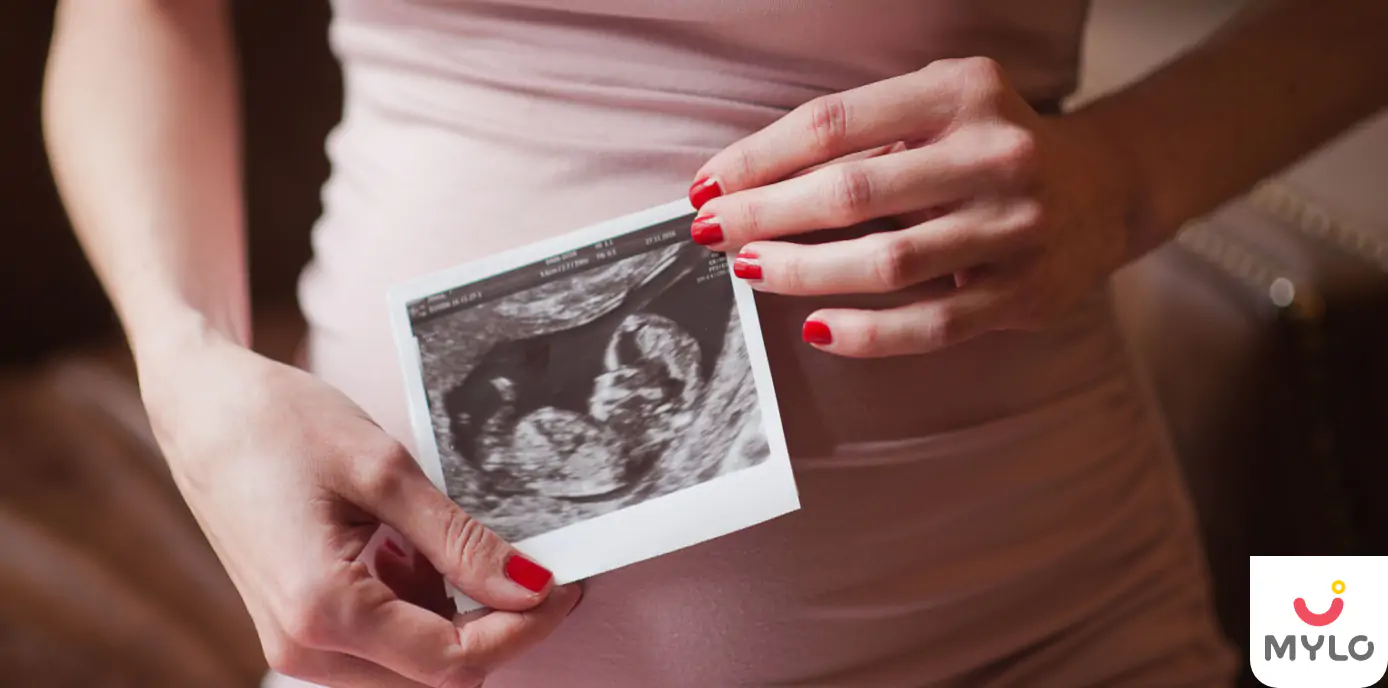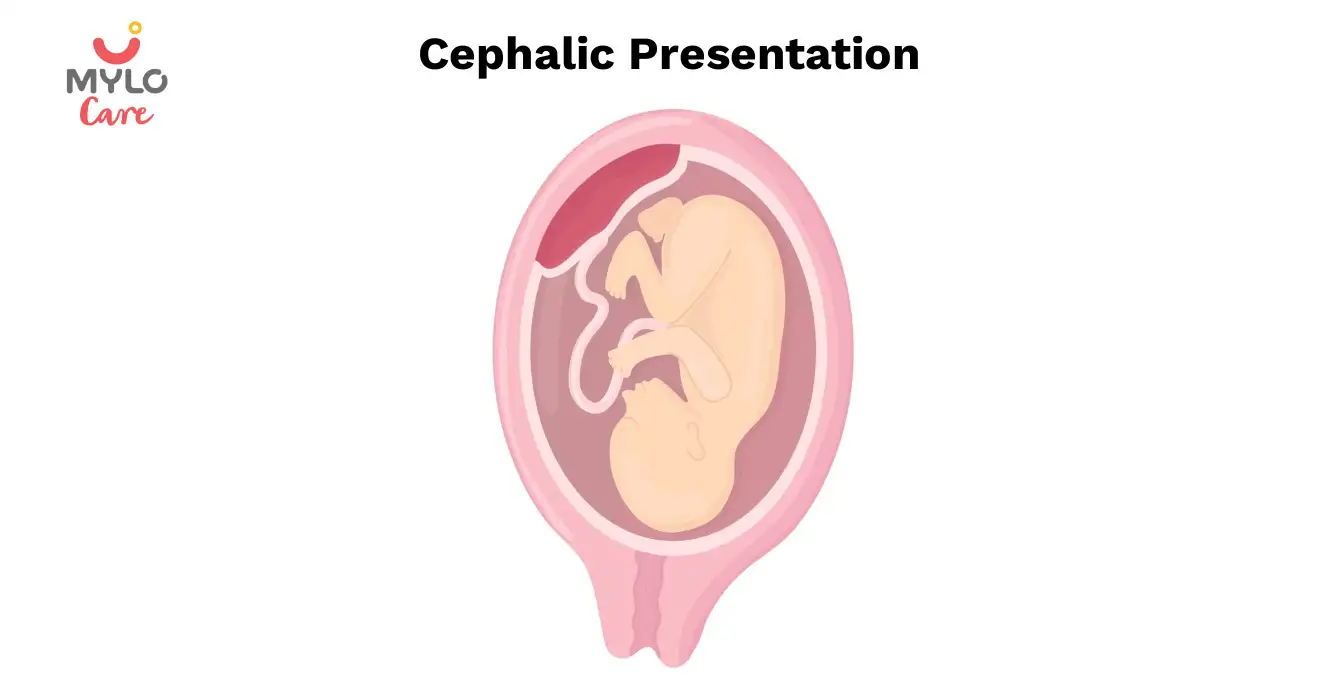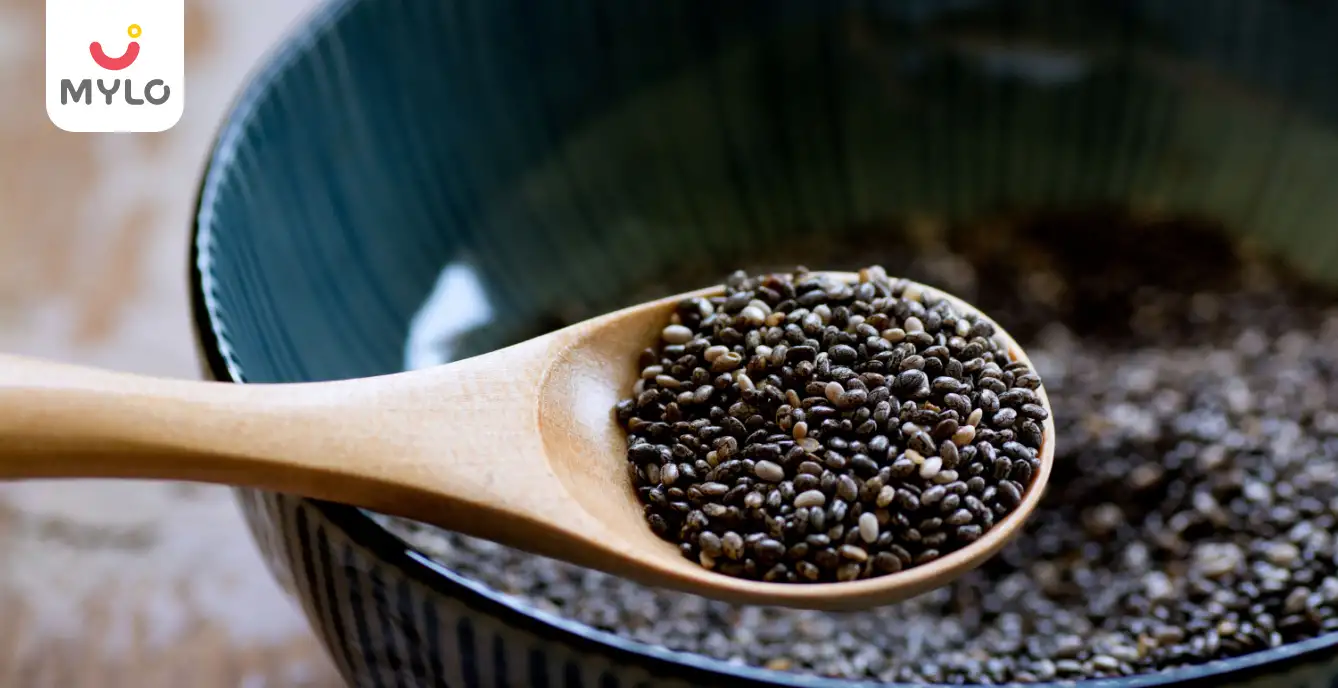Home

Labour & Delivery

Which Is Better Normal Or Cesarean Delivery
In this Article

Labour & Delivery
Which Is Better Normal Or Cesarean Delivery
Updated on 24 November 2023
Pregnancy is a beautiful journey to bring life into this world. Finally, you are glad to start a new chapter of your life. However, with endless, priceless moments, this phase has its share of worries. What most women think of during pregnancy is, "Which is better: normal or cesarean delivery?" However, each has its own set of pros and cons. A vaginal or normal delivery is a natural means to give birth. It is best to discuss with your doctor the pros and cons of normal vs. cesarean delivery. Since every woman is different, the benefits of cesarean vs. normal delivery depend on the health condition.
What Is The Difference Between A Cesarean And Normal Delivery?
A normal or vaginal delivery is a natural process through which a baby is born. During this process, your cervix thins and opens, and your uterus contracts to push your baby down the birth canal and out of your vagina. A cesarean or C-section delivery is a surgical process to deliver a baby through a cut in the mother's abdomen instead of the vagina. Since it is a major abdominal procedure, it can be a planned or scheduled cesarean, unplanned or emergency cesarean.
Which is better Normal Delivery Or C- section?
There is no one answer as it depends on several factors. Although a C-section is a common procedure, it is a major operation with its share of risks. Hence doctors do not recommend one unless it is necessary for medical reasons.
A vaginal birth is safer than a C-section if there are no complications with your pregnancy or labor. And this is true not just for your current pregnancy but also for future pregnancies. Normal delivery is also better for your future fertility.
Sometimes, a C-section is needed to save the life of a mom or a baby. In these cases, without a doubt, a cesarean is the safest option for you and your baby. However, if your labor has been induced and is not advancing, your doctor might suggest a C-section. Your doctor will do this after assessing your condition and how well your baby is coping. Your doctor can also know how your baby is doing by monitoring their heartbeat during labor.
In some circumstances, your doctor may offer you the choice between induced or having a C-section. Having induced labor can lead to more interventions, such as an assisted birth with a vacuum or forceps, and these may have risks too. Hence you and your doctor will need to weigh these risks against the risks of having a cesarean.
Also, there may be times when the decision is not clear-cut. It would be up to you and your doctor to think about the pros and cons of having a cesarean and then decide what's best for you. So learning these facts may help you prepare as this may happen before you give birth or while in labor.
Your general health and lifestyle also influence the decision. You have a greater risk of complications after a C-section if you:
-
Are you overweight or obese?
-
Have you had any prior surgeries on your tummy?
-
Already have a medical ailment, such as heart disease.
Which Is More Painful, A Normal Delivery Or A Cesarean?
It's difficult to say exactly what pain feels until you've given birth; childbirth is different for everyone. You may have imagined a lot about the pain of labor, but the main drawback of a C-section is pain after the delivery and not during the procedure.
You'll possibly have a drip for a few hours after the surgery so that top-ups of painkillers can be provided when you need them. You're likely to experience pain in your wound for the first few days and discomfort in your tummy for at least a week after the surgery while your body heals. It will take longer to recover as you require pain relief tablets for a while after the surgery than if you'd have a straightforward vaginal birth.
Cesarean delivery side effects cause some women to suffer from bad headaches and pain in the lower back at the area of the epidural or spinal, as well as their neck. It is necessary to mention this to your doctor since they might be able to adjust your medication to help relieve some of your discomfort.
Many mothers ask for a cesarean delivery to avoid labor pain. Still, it is important to know that the pain in a normal delivery is usually much shorter than after a cesarean. Cesarean delivery may also affect your day-to-day activities for some time. Also, for some women, abdominal distress may last for a few months after surgery.
Will I Have A Normal Or A C-section Delivery If My Baby's Cord Is Around His Neck?
This depends on the circumstance. If your baby's umbilical cord gets wrapped around the neck, your doctor will probably sort it out before you notice. Since it is quite common, it's unlikely to cause any problems for you or your baby.
The umbilical cord often lasses completely unnoticed during the birth without any problems. But, if your doctor notices the cord around your baby's neck once their head is out, they can easily fix it. The doctor will simply loosen the cord so your baby's shoulder can pass through, or the doctor will slip the cord over the baby's head.
However, there are two instances where the cord wrapped around the baby's neck might be a cause for concern:
-
If the cord is wrapped tightly around their neck.
-
If something is obstructing the blood from flowing through the cord.
Your doctor may clamp and cut the cord before the baby's shoulders are born if the cords are tightly wrapped around the neck.
What Are The Risks To My Newborn Baby After A Cesarean Birth?
Both during and after cesarean, your baby is likely to be perfect. However, babies born by C-section are more likely required to stay in the neonatal care unit than babies born normally. Also, some babies suffer from breathing problems after they are born. Breathing problems after C-sections are not so serious, but sometimes babies require special care to help them recover. Premature babies born by cesarean and babies born by cesarean before 39 weeks of pregnancy more commonly suffer from breathing problems.
Sometimes a baby may get an accidental cut from the doctor's scalpel, but this usually heals without causing any damage. Also, in the long term, babies born by cesarean may have a slightly increased chance of developing asthma in childhood.
What Are The Risks To A Mother After A Cesarean Delivery?
Since C-section is a major abdominal surgery, it's more likely to cause complications such as:
1. Higher blood loss
The main risk of cesarean birth is bleeding more than expected during the surgery. Since most of the bleeding occurs at the time of surgery, your doctor can manage it. If very heavy bleeding occurs, which is very uncommon, you may need a blood transfusion.
2. Infections
You will be administered a single dose of antibiotics to reduce the risk of infection before surgery. Yet, some women still go on to get an infection, and the three main infections to look out for:
-
Infection in your wound includes redness, discharge, worsening pain, or even splitting open.
-
Infection in the lining of the uterus is called endometriosis. The symptoms include heavy bleeding, smelly discharge, or fever after birth. This usually occurs if your water breaks before your labor starts or you have had several vaginal examinations.
-
Urinary tract infection: You will have a thin tube, or catheter, inserted during the surgery to empty your bladder, which can cause infection. The catheter is generally left in for at least 12 hours or until your mobile. Symptoms include low pain in your tummy or groin, a high temperature, chills and confusion, and difficulty peeing.
3. Blood clot
Any surgery increases your chances of developing a blood clot. For this purpose, you'll also be encouraged to get up immediately after surgery. This will promote blood circulation and reduce your risk of clot formation. Depending on where it forms, a clot can be serious. It can be life-threatening if the clot forms in your lungs. Some symptoms of a problem include a cough or shortness of breath, or swelling in your calf.
4. Adhesions
Similar to any other operation in the pelvic region, a cesarean carries a risk of adhesions as you heal. Adhesions are bands of scar tissue that make organs in your abdomen glue to each other or the inside of your tummy. Adhesion can be painful sometimes as they limit the movement of your internal organs. They can sometimes lead to problems such as bowel construction and fertility if they press on neighboring organs.
5. Effects of anesthetic
Most cesareans are performed without a general anesthetic, which induces sleep. Instead, an epidural or a spinal is used to numb your tummy. Also, an epidural is safer than a general anesthetic for you and your baby. Epidurals also have some risks, such as severe headaches and nerve damage.
6. Longer hospital stays
Regardless of whether it's a planned C-section or one following labor, women who deliver vaginally are discharged sooner after delivery than women who have a C-section. You must stay in the hospital between three to five days in case of a cesarean.
7. Uneven healing of scars
Usually, your scar will become thinner and flatter and turn whiter or the color of your skin. However, in some cases, the body overreacts to the healing process and develops scars that don't heal smoothly. These are Keloid scars and hypertrophic scars. These scars can be thickened, itchy and painful.
Can A C-section Cause Any Other Serious Complications?
You may need a blood transfusion if you've had a serious complication during C-section. These include:
-
Damage to your bowel or bladder.
-
Although this is very rare, injury to the tubes connecting the kidneys to the bladder.
-
Being admitted to intensive care after C-section.
-
Having an emergency surgery to remove your womb.
-
Further surgery at a later date.
What Are The Benefits Of A Cesarean Delivery?
If you had an emergency or a planned cesarean for health reasons, you'd understand that it's likely to be the safest way for your baby to be born and for you to give birth. A planned C-section may be required particularly if your baby is breech or if the placenta is covering the baby's exit, the neck of the womb. However, if your labor is prolonged or your baby is distressed, an emergency C-section may be required occasionally.
Another C-section benefit is that if you opt for a planned cesarean, you will know when your baby will arrive. Knowing when your baby will arrive can give you time to plan for maternity leave, family help, and other post-baby requirements. Yet, you could enter labor before your scheduled C-section fate, and recovery from this surgery could take more time than anticipated.
You also won't have the pain of contractions, another benefit of C-section delivery. Plus, you won't have to worry about tearing the area between your vagina and perineum that happens during normal delivery.
You won't need a marginal cut during delivery or experience the pain from bruising and stitches to your vagina and perineum.
Recovery After C-section Delivery
C-section recovery depends on your health and if there are any complications. If you're fit, healthy, and not overweight, you're likely to recover well from a cesarean. Managing the pain that naturally results from surgery is the main concern when recovering from a C-section. But your doctor will prescribe pain-relieving medications that are safe to use even while you're breastfeeding.
Sometimes complications, such as bleeding and infection, can make healing more difficult and result in longer hospital stays. You may also have heard about postnatal depression, or that breastfeeding is difficult after a cesarean. Try not to worry about it. However, early postnatal depression is more common in women who have had a cesarean than in women who've had a vaginal birth.
You might find breastfeeding more of a challenge than a mother who has delivered vaginally. This is because finding a comfortable feeding position might take a lot of work. It is important to get help if you want to breastfeed your baby. Ask the nurse attending to you at the hospital for assistance and tips on breastfeeding. Also, speak to your doctor about good positions to breastfeed.
Recovering from a cesarean is different from a vaginal birth, but some things are the same. You will have postnatal bleeding, known as lochia, after a cesarean and vaginal birth. You might also experience postnatal urinary incontinence, a common problem for many new mothers after giving birth.
You may also like: Tips For A Normal and Safe Vaginal Birth
Does C-section Affect Future Pregnancies?
Once you've had a C-section:
-
In future pregnancies, you're more likely to have another C-section. However, it is unnecessary, and a normal delivery after a cesarean is also possible.
-
Having a low-lying placenta increases the risk of the placenta embedding too deeply, especially if you've had two or more cesareans before. This complication may result in losing a lot of blood during delivery, a greater need for blood transfusion, and a possible hysterectomy.
-
There is a very small risk of the scar on your uterus opening up again in future pregnancies, known as uterine rupture. It can be a serious risk to you and your baby's life if it happens.
The probability of stillbirth in future pregnancy also increases if you've had a C-section, although it is very uncommon.
How Can You Avoid A Cesarean Delivery?
The type of delivery that's best for you depends on various factors, such as:
-
Your medical record
-
Your baby's health
-
Your baby's position in the womb
-
The number of babies you're carrying
-
Any pregnancy complications.
There are some things you can try to avoid a C-section and increase your chances of a normal delivery:
-
Be sure to attend all of your prenatal appointments.
-
Eat well and stay active to have a healthy pregnancy.
-
Make your emotional and physical well-being important.
-
Stay informed and enroll in antenatal classes that prepare you for labor and childbirth.
Conclusion
The choice is yours; you understand what is best for you and your baby. It is necessary to discuss this with your doctor to make a well-informed decision. However, the difference between normal delivery and cesarean is important when deciding on the birth procedure. Also, the safest delivery for you depends on various things, such as your medical history, your baby's health, and if there are many medical issues.
References
1. Saraf TS, Bagga RV. (2022). Cesarean section or normal vaginal delivery: A cross-sectional study of attitude of medical students. J Educ Health Promot.
2. Zakerihamidi M, Latifnejad Roudsari R, Merghati Khoei E. (2015). Vaginal Delivery vs. Cesarean Section: A Focused Ethnographic Study of Women's Perceptions in The North of Iran. Int J Community Based Nurs Midwifery.
Tags
Which Is Better Normal Or Cesarean Delivery in Hindi, Which Is Better Normal Or Cesarean Delivery in Tamil, Which Is Better Normal Or Cesarean Delivery in Telugu, Which Is Better Normal Or Cesarean Delivery in Bengali



Written by
Ishmeet Kaur
Ishmeet is an experienced content writer with a demonstrated history of working in the internet industry. She is skilled in Editing, Public Speaking, Blogging, Creative Writing, and Social Media.
Read MoreGet baby's diet chart, and growth tips

Related Articles
Related Questions
Hello frnds..still no pain...doctor said head fix nhi hua hai..bt vagina me pain hai aur back pain bhi... anyone having same issues??

Kon kon c chije aisi hai jo pregnancy mei gas acidity jalan karti hain... Koi btayega plz bcz mujhe aksar khane ke baad hi samagh aata hai ki is chij se gas acidity jalan ho gyi hai. Please share your knowledge

I am 13 week pregnancy. Anyone having Storione-xt tablet. It better to have morning or night ???

Hlo to be moms....i hv a query...in my 9.5 wk i feel body joint pain like in ankle, knee, wrist, shoulder, toes....pain intensity is high...i cnt sleep....what should i do pls help....cn i cosult my doc.

Influenza and boostrix injection kisiko laga hai kya 8 month pregnancy me and q lagta hai ye plz reply me

RECENTLY PUBLISHED ARTICLES
our most recent articles

Fetal Growth
How to Get Baby in Right Position for Birth?

Fun & Humour
Paheliyan 101: Riddles for Kids That Educate and Entertain

Fetal Growth
The ABCs of Cephalic Presentation: A Comprehensive Guide for Moms-to-Be

Diet & Nutrition
The Ultimate Guide to Consuming Chia Seeds in Pregnancy

Tips For Normal Delivery
Essential Tips for Normal Delivery After Cesarean

Diet & Nutrition
Crab During Pregnancy: Benefits, Risks and Smart Choices
- Normal Delivery Tips: An Expecting Mother's Guide to a Smooth Childbirth Experience
- Top 10 Panchatantra Stories in English You Must Read to Your Children
- What Helps in Improving Mental Health of Women
- Childhood Disorders: Meaning, Symptoms & Treatment
- Bleeding During Pregnancy 8 Weeks: Should You See a Doctor?
- The Ultimate Guide to Having Sex After C Section
- The Ultimate Guide to Baby Brain Development Food During Pregnancy
- Nappy Rash: Your Ultimate Guide to Symptoms and Quick Relief
- How to Get Periods Immediately to Avoid Pregnancy?
- Loss of Appetite During Pregnancy: Causes and Solutions
- How to Increase Newborn Baby Weight: Expert Tips and Tricks
- Fertisure M: The Comprehensive Solution to Male Infertility and Reproductive Health
- All You Need to Know About the New COVID Variant: Pirola
- Endometrial Polyp and Pregnancy: How Uterine Polyps Can Affect Your Chances of Conception


AWARDS AND RECOGNITION

Mylo wins Forbes D2C Disruptor award

Mylo wins The Economic Times Promising Brands 2022
AS SEEN IN
















- Mylo Care: Effective and science-backed personal care and wellness solutions for a joyful you.
- Mylo Baby: Science-backed, gentle and effective personal care & hygiene range for your little one.
- Mylo Community: Trusted and empathetic community of 10mn+ parents and experts.
Product Categories
baby carrier | baby soap | baby wipes | stretch marks cream | baby cream | baby shampoo | baby massage oil | baby hair oil | stretch marks oil | baby body wash | baby powder | baby lotion | diaper rash cream | newborn diapers | teether | baby kajal | baby diapers | cloth diapers |








